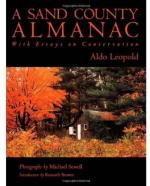|
This section contains 791 words (approx. 3 pages at 300 words per page) |

|
Sand is any material composed of loose, stony grains between 1/16 mm and 2 mm in diameter. Larger particles are categorized as gravel, smaller particles are categorized as silt or clay. Sands are usually created by the breakdown of rocks, and are transported by wind and water, before depositing to form soils, beaches, dunes, and underwater fans or deltas. Deposits of sand are often cemented together over time to form sandstones.
The most common sand-forming process is weathering, especially of granite. Granite consists of distinct crystals of quartz, feldspar, and other minerals. When exposed to water, some of these minerals (e.g., feldspar) decay chemically faster than others (especially quartz), allowing the granite to crumble into fragments. Sand formed by weathering is termed epiclastic.
Where fragmentation is rapid, granite crumbles before its feldspar has fully decayed and the resulting sand contains more feldspar. If fragmentation is slow, the resulting sand...
|
This section contains 791 words (approx. 3 pages at 300 words per page) |

|


